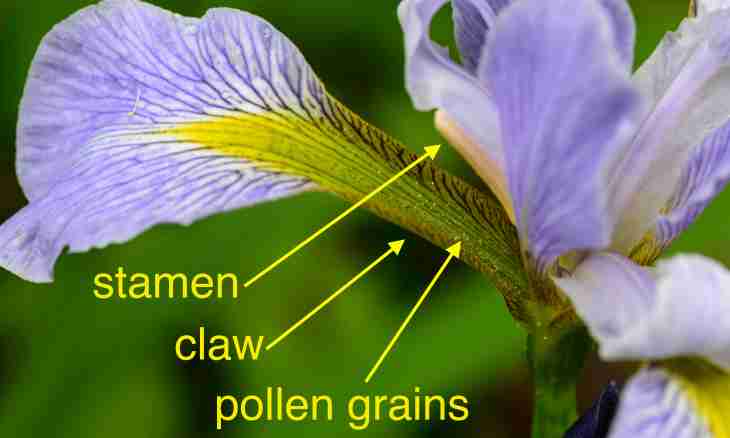The flower is the modified shortened escape, the generative body serving for seed reproduction of plants. It develops from a kidney, and usually side or main escape terminates in it. Despite all variety of flowers, in their building a certain similarity is found.
Instruction
1. A pedicel – a thin small stalk on which the flower, and a receptacle – its expanded part sits form a stem part of a flower. Cup sepals (external leaflets), nimbus petals (internal bright leaflets), pestles and stamens are modified leaves. Stamens and pestles are bodies of any flower, and petals and sepals form a perianth.
2. The perianth can be double or simple. The perianth as at an apple-tree, consisting of a cup and a nimbus, is called double. Also cherry, a rose, cabbage and many other plants have it. If all flowers of a perianth are more or less identical as, for example, at a lily, a tulip, an Amaryllis and in general many monocotyledonous plants, it is called simple. At the same time all leaflets can be bright and large (a tulip, an orchid) or, on the contrary, small and ordinary-looking (bulrush). Flowers of an ash-tree and a willow have no perianth and therefore they are called "naked".
3. Perianth leaves, both simple, and double, can be located differently in a flower. If through them it is possible to carry out several planes of symmetry, flowers are called correct. Such are observed at an apple-tree, cabbage, cherry and others. If it is possible to carry out one plane of symmetry, these are the wrong flowers. They meet, for example, at a sage and peas.
4. The pestle is located in the center of a flower and is usually well noticeable. It consists of a snout, a column and an ovary. At an apple-tree, for example, the pestle is formed by five columns free which grew together in the basis in the top part and bearing on one snout, and there is a pyatignezdny ovary. In an ovary semyazachatka from whom seeds develop subsequently lie.
5. The central pestle is surrounded with numerous stamens. Each of them has a boot in which pollen, and tychinochny thread ripens.
6. If in flowers of a plant there are both stamens, and pestles, they are called oboyepoly. Diclinous flowers, for example, at corn and a cucumber, have or stamens (tychinochny flowers), or pestles (pistillate plants flowers).
7. Diclinous plants can be monoecious or dvudomny. At cucumbers and corn, for example, tychinochny and pistillate plants flowers develop on one plant therefore they are called monoecious. At dvudomny plants, such as willow, a poplar and hemp, pistillate plants the flowers are on some plants, tychinochny – on others. Some species of sedge also two-blast furnaces.

